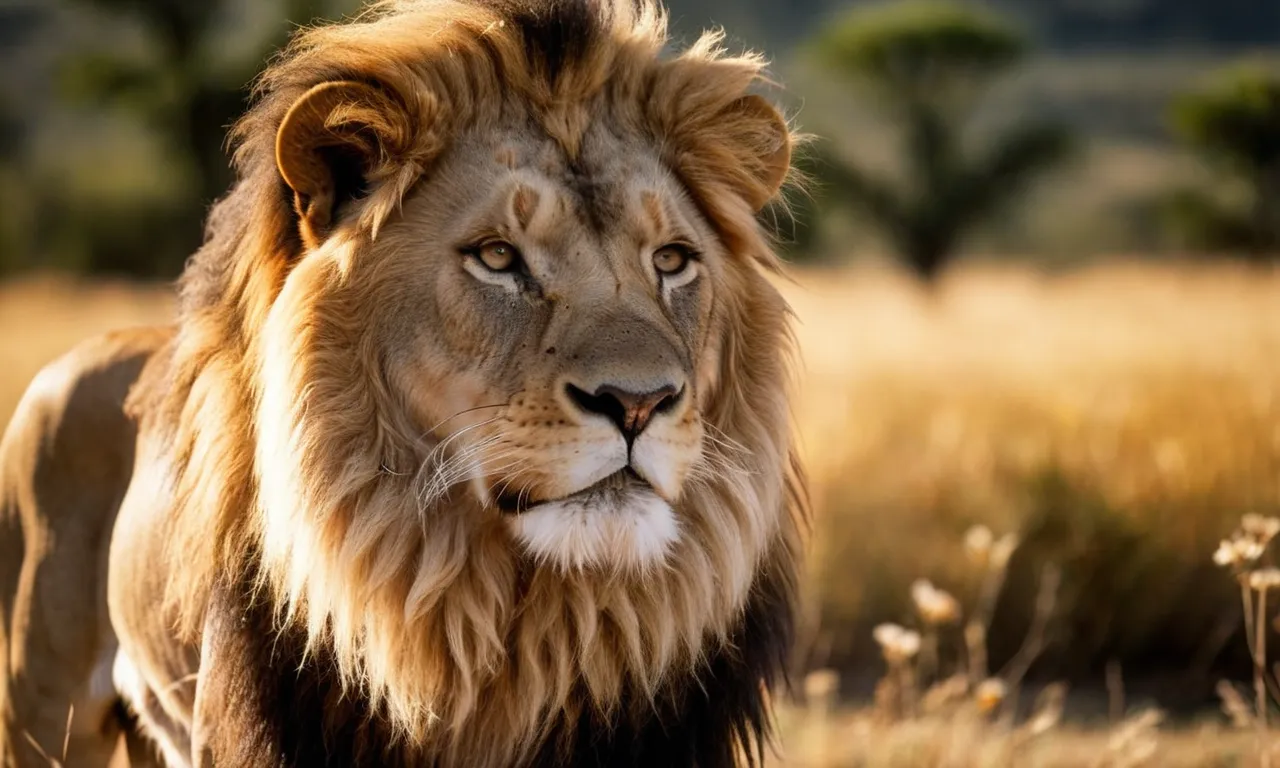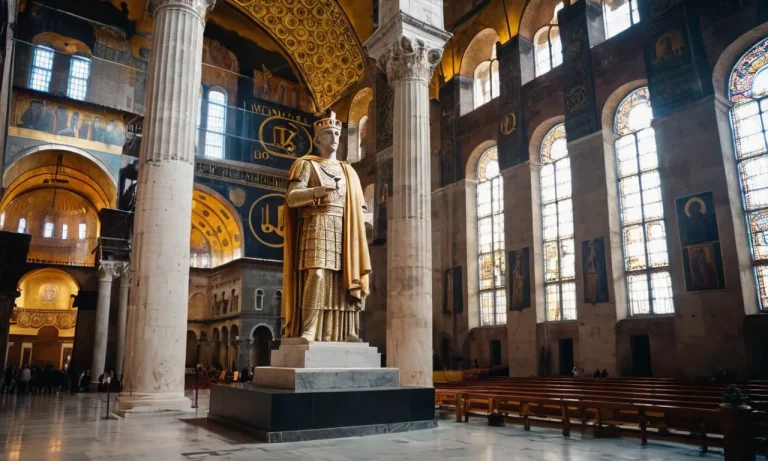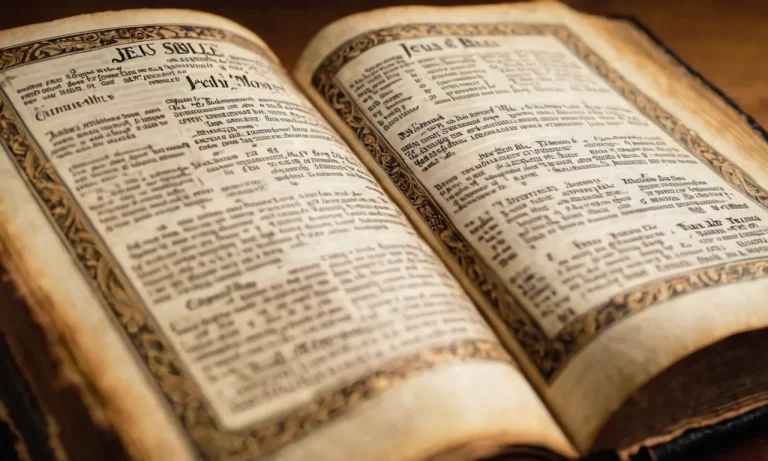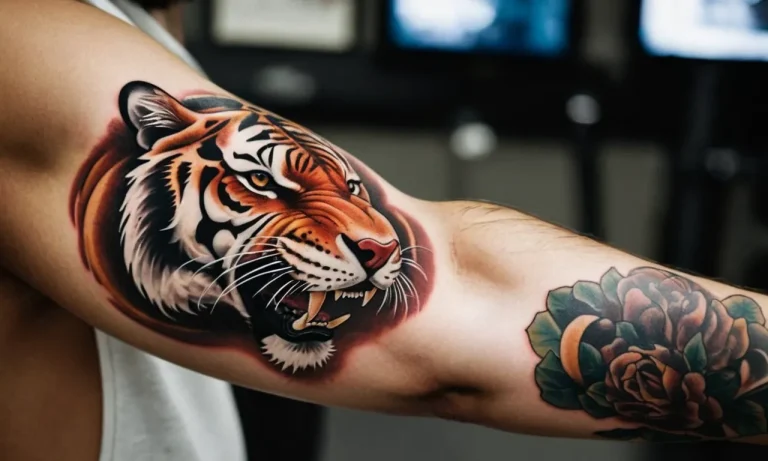What Animal Represents God?
Since the beginning of human civilization, spirituality and religion have been an integral part of society. People have always been fascinated by the concept of a higher divine power and tried to make sense of it through symbolism found in nature.
If you’re short on time, here’s a quick answer to your question: Animals like the lamb, dove, eagle, lion, ox, and unicorn have been historically used to represent God or certain attributes of the divine across different faiths and cultures.
In this comprehensive guide, we will explore the prominent animal symbols that have come to be associated with God over the centuries and analyze what each of those connections means.
The Lamb as a Symbol of Christ
Significance in Christianity
The lamb has profound symbolic meaning in Christianity. It represents Jesus Christ as the perfect and ultimate sacrifice for the atonement of sins. Just as a lamb was sacrificed in the Old Testament, Christ metaphorically became the lamb that was slain to absolve humanity of its sins (John 1:29).
The depiction of Christ as a lamb underscores his qualities of innocence, meekness, and sacrifice. A lamb connotes purity, humility and deference to authority just as Christ demonstrated these virtues in giving up his life for the greater good.
The metaphor of “Lamb of God” poignantly reflects Christ’s role as the redeemer of mankind.
Artworks over the centuries have depicted Christ as a lamb, underscoring this powerful symbolism that resonates across Christendom. Images like Agnus Dei and the Ghent Altarpiece prominently feature the Lamb of God, reminding viewers of Christ’s supreme sacrifice.
Christ as the Paschal lamb also evokes imagery from Passover where the ancient Israelites used the blood of a sacrificed lamb to save themselves from catastrophe. This metaphorically parallels how Christ’s blood redeems believers from damnation.
The Easter feast reminds Christians of this liberation from sin and death.
Metaphorical Parallels with Christ
The poetical metaphor of Christ as a lamb has parallels that emphasize his virtues:
- A lamb’s lack of guile and innocence parallels Christ’s sinless nature.
- The meekness and gentleness of a lamb mirrors Christ’s mild and calm temperament.
- A lamb’s association with sacrifice evokes Christ’s crucifixion for humanity’s salvation.
- The blood of the lamb delivering Israelites in Egypt analogizes Christ’s blood liberating humanity.
- The paschal lamb’s ritual slaughter represents Christ’s death to absolve sins.
So in multifarious ways, the lamb serves as an apposite symbol that epitomizes the messianic role and traits of Jesus Christ in Christianity. This metaphor succinctly yet profoundly captures his virtues of innocence, meekness and redemption through sacrifice.
The Dove Representing the Holy Spirit
Biblical Accounts
The dove is commonly used as a symbol for the Holy Spirit in Christianity. This connection originates from several biblical accounts:
- When Jesus was baptized by John the Baptist in the River Jordan, the Holy Spirit descended on him in the form of a dove (Matthew 3:16, Mark 1:10, Luke 3:22, John 1:32).
- Noah released a dove from the ark to find land after the flood. The dove came back with an olive branch, indicating land was near (Genesis 8:8-12). This signified God’s faithfulness and the Holy Spirit’s role in renewal.
- In Song of Songs, the dove is a term of endearment used by lovers and is sometimes considered a metaphor for the Holy Spirit (Song of Songs 1:15, 2:14).
These passages establish the dove as a symbol of the Holy Spirit’s gentle nature, restorative properties, and role as a messenger from God. The dove’s white color is also sometimes used to represent purity and peace.
Attributes of Gentleness and Peace
The dove epitomizes many attributes associated with the Holy Spirit, including:
- Gentleness: Doves are known for their docility. The Holy Spirit embodies this quality, guiding Christians softly and gently.
- Harmlessness: Doves are vulnerable birds that avoid conflict. This fits with the Holy Spirit’s role as a comforter and counselor.
- Sensitivity: Doves are very sensitive and wary. Similarly, the Holy Spirit is sensitive to our needs and concerns.
- Faithfulness: Doves mate for life. This mirrors the Holy Spirit’s unwavering loyalty and commitment to God’s people.
- Peace: In the Bible, the dove brought good news and signaled the end of God’s wrath after the flood. The Holy Spirit brings inner peace and reconciliation with God.
The dove is thus an appropriate and resonant symbol for the Holy Spirit’s gentle, peaceful virtues. Artists commonly depict the Spirit descending as a dove when portraying Jesus’ baptism and other biblical scenes. The dove and olive branch remain prevalent symbols among Christians today.
The Eagle Denoting Divine Providence
Soaring High
The eagle is often seen as a symbol of divine providence and connection to the divine realm for its ability to soar high into the heavens. With keen eyesight, powerful wings, and sharp talons, the eagle can reach heights and see vistas that are inaccessible to most other creatures.
This majestic bird seems to effortlessly ride thermals and updrafts, staying aloft for hours without needing to flap its wings. Throughout history, many cultures have viewed the eagle as a messenger bringing spiritual insight or predictions from above.
Native American tribes such as the Lakota and Cheyenne saw the eagle as a sacred messenger who carried prayers to the Creator. In ancient Egypt, the eagle was linked to the sun god Ra and considered the embodiment of the pharaoh’s divine rule.
Greek mythology envisioned Zeus, the king of the gods, taking the form of an eagle. The Bible depicts an eagle carrying Israel to safety “on eagles’ wings” (Exodus 19:4). This symbolizes God’s providence and care for His chosen people.
The eagle’s ability to renewable itself has also contributed to its divine symbolism. Eagles periodically molt and grow new feathers, beaks, and talons. This process of renewal is seen as an act of rejuvenation and spiritual transformation.
Just as the eagle renews its physical features, some cultures have used the eagle to represent spiritual purification, rebirth, and connection to the eternal.
Renewal and Rebirth
The eagle’s renewal process provides rich symbolic meaning related to spiritual rebirth and connection to the divine. Here are some key aspects of the eagle’s renewal that contribute to its divine symbolism:
- Molting – Eagles molt in cycles, shedding old feathers and growing new ones. This process symbolizes rebirth, transformation, and new beginnings.
- Long lifespan – Eagles can live up to 50 years in the wild. Their longevity suggests wisdom, spiritual vision, and connection to the eternal.
- Nest reconstruction – Eagles often rebuild their nests, reinforcing the ties between old and new. This act echoes spiritual renewal.
- Rejuvenated strength – New feathers and beak allow the eagle to soar high again. This renewal of vigor represents the soul’s revived energy.
- Improved vision – With new eyesight, the eagle’s celestial gaze sharpens once more. Its sight reconnects it to divine perception.
By periodically renewing itself, the eagle overcomes physical limitations and maintains its regal vitality. Its ability to rejuvenate relates to human desires for spiritual cleansing, clarity, and connection to the eternal.
The eagle’s renewal enables a cyclical process of rebirth and self-transcendence.
| Culture | Eagle Symbolism |
|---|---|
| Native American | Sacred messenger, carrying prayers to the Creator |
| Ancient Egypt | Embodiment of divine kingship and the sun god Ra |
| Ancient Greece | Zeus, king of the gods, took the form of an eagle |
| Christianity | Bearing Israel to safety “on eagles’ wings” |
The eagle’s renewal has inspired rich cultural and spiritual connections for millennia. Its heavenly flights and rejuvenated vigor continue to uplift the human imagination. Whenever we witness the eagle soaring overhead, its majesty and grace remind us of divine providence and our own spiritual aspirations.
The Lion Standing for Strength and Courage
Christ as the Lion of Judah
In Christianity, Jesus is sometimes referred to as the “Lion of Judah” based on passages in the Bible that compare Christ to a lion. The lion, known as the “king of beasts,” represents strength, power, and courage. Comparing Jesus to a lion emphasizes his authority and supremacy.
Jesus descends from the tribe of Judah, which had a lion as its symbol (Genesis 49:9). The image of Christ as the Lion of Judah conveys that he has triumphantly overcome death, defending and protecting his people with fierce bravery.
The lion motif is found in Revelation 5:5 where Jesus is called the “Lion of the tribe of Judah, the Root of David” who is worthy to open the scroll with the seven seals. This Lion imagery highlights Christ’s valor and supremacy.
It assures believers that even in times of persecution, Jesus guards and shields his people who can take refuge in him with bold confidence.
Protection and Guardianship
The lion’s fierce protective instincts parallel with God’s loving guardianship of His children. A lioness vigilantly watches over her cubs and is prepared to defend them courageously. Similarly, the Bible says God protects those who trust in Him (2 Samuel 22:3-4).
God promises to guard believers as the “apple of his eye” (Zechariah 2:8). He shelters those who take refuge in Him (Psalm 91:4).
Jesus even compares himself to a mother hen protecting her chicks from harm under her wings (Luke 13:34). This tender imagery blends beautifully with the lion motif. It presents the paradox of Christ having both fierce courage to fight enemies and gentle nurture for his children.
As the Lion of Judah, Jesus exhibits raw power mingled with selfless love dedicated to keeping his people safe. The lion encapsulates this blend of mighty conqueror and loving guardian.
The Ox Symbolizing Sacrifice and Service
Purpose and Duty
The ox has long been a symbol of hard work, sacrifice, strength, and dutiful service in many cultures and religious traditions. In ancient times, oxen were domesticated as beasts of burden to pull plows and carts, powering important agricultural work.
This placed them in a central role in society, making them revered for their tireless efforts in tilling fields to bring sustenance and enable civilization.
References to oxen as meaningful symbols abound in religious texts like the Bible. According to biblical passages, oxen were frequently sacrificed as offerings in important rituals. As working animals that gave their lives to nourish people or show devotion to God, oxen took on a deeper meaning representing the ideals of selfless duty and commitment to greater purposes.
Their potent symbolism reflects virtues like loyalty, diligence, generosity and using one’s gifts to serve others rather than solely oneself.
The Winged Ox in Bible and Other Faiths
The image of a winged ox appears in various religious traditions, often linked to angelic or heavenly realms. According to biblical tradition, the four winged beasts described in prophetic visions – one of which was ox-like – are cherubim dwelling close to God’s throne.
With wings elevating their stature and holy calling, these exalted oxen connect to divine glory, watchfulness and readiness for righteous action.
In Ancient Egypt and Mesopotamia, winged bulls with human heads guarded temple entrances, blending earthly strength with higher wisdom. Zoroastrian and Islamic arts also feature protective ox-like beings with wings and human facial features.
Across these faiths, adding wings to oxen amplified their spiritual dimension – now enlightened guardians channeling divine qualities while remaining grounded in service.
| Faith Tradition | Winged Ox Symbolism |
| Biblical – Book of Ezekiel | Cherubim around God’s Throne |
| Ancient Egyptian | Temple Guardians |
| Ancient Mesopotamian | Spirit Protectors |
| Zoroastrian | Holy Defense Forces |
So while oxen have always signified sacrifice, the addition of wings elevated them to sacred defenders and exalted servants of the divine. Their expanded symbolism bridges earthly duty with heaven’s purpose – noble traits that faith traditions have long found worth striving towards through righteous living.
The Unicorn Representing Purity and Grace
Rarity and Special Powers
Unicorns are legendary creatures that have captured people’s imaginations for centuries with their purity, grace, and magical qualities. Though depicted in various ways across cultures, unicorns are most commonly described as having the body of a horse with a single, spiral horn protruding from their forehead.
The rarity of unicorns is one aspect that adds to their mystique and allure. Some legends state that unicorns could only be tamed by maiden women, underscoring the theme of purity associated with them. Their horns were also believed to have healing and protective powers.
According to medieval European lore, unicorn horns could render poisoned water potable and cure sickness. Wow, just imagine having that kind of magical ability! No wonder unicorns have an air of divinity about them.
Depictions Across Cultures and Regions
The unicorn myth likely originated in ancient India, where unicorns represented goodness and were closely linked with the gods. These unicorns, sometimes depicted with wings or fish-like facial hair, were believed to be extremely powerful.
In Chinese mythology, the qilin is a mix between a dragon, deer, ox, horse, and unicorn. The appearance of a qilin was thought to foretell the birth or passing of a wise scholar or illustrious ruler. Very cool!
Across the Middle East, unicorns were symbols of strength and fortune. The Arabian oryx, with its long, straight horns, could have contributed to early unicorn depictions in Mesopotamian art.
So while unicorns are mainly associated with European tales today, accounts of unicorn-like creatures exist in stories around the world. Though depicted differently across cultures, unicorns’ grace and rarity make them a widespread symbol of purity and divinity.
Conclusion
In conclusion, animals like the lamb, dove, eagle, lion, ox and unicorn carry deep-rooted symbolic meaning when used to represent God or facets of the divine across different world theologies and spiritual cosmologies.
Their connections metaphorically capture attributes like innocence, peace, power, courage, sacrifice, rarity and more which help convey the awe-inspiring qualities associated with a supreme supernatural force or deity that is otherwise difficult to grasp for the human mind.
So if you ever come across these popular beastly motifs in a religious setting, remember there is profound significance attached to them that taps into humanity’s eternal quest for the divine.







